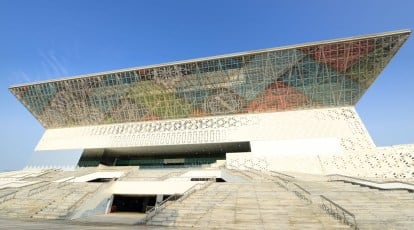Tono Fernandez Uson, the main architect and lead designer of IDOM, says India’s diversity was an inspiration.
The Yashobhoomi International Convention and Expo Centre (IICC) has become the talk of the town since its inauguration. People worldwide are talking about this architectural marvel. The design of Yashobhoomi showcased India›s diversity with artwork. The master plan and concept design were conceived by architectural firm IDOM, from Madrid, Spain, with local firm CPK. However, the detailed design drawings have been completed by Arcop Associates Pvt. Ltd. and EPC Architect for L&T. The Sunday Guardian interacted with the main architect of Yashobhoomi, Tono Fernandez Uson, the lead designer of IDOM, to understand how they pulled it off. Excerpts:
Q: What are the key features that make the Yashobhumi unique?
A: The design of Yashobhoomi is one of its kind, and achieving it was the biggest challenge for us. We have received inspiration at different levels to ensure the uniqueness of the project. The main inspiration comes from experiencing India’s diversity, which India has achieved for centuries. In this, we have tried to merge global and local, contemporary and traditional, innovation and handcraft, as well as India›s art, culture, and technology under one umbrella. Due to this, one can feel the roots of the Indian tradition everywhere at different levels in the state-of-the-art convention centre. The convention centre is like a great mudra that embraces visitors with open hands, like the open sky. Its structure and main bodies reflect the tripartite structure of ancient temples, with a podium, a stepwell, and the pinnacle that looks like a technological crown and the body in between, where people gather. The traditional expressions of India are also rooted in the spirit of the project. One can find it in the mandala on the removable rooftop of the arena or the rangolis that we have drawn with local plants on the green rooftop of the exhibition halls. Last but not least, the introduction of solar panels to collect the energy of the sun and save electricity.
Q: How long did it take to complete the convention centre?
A: It has taken less than six-and-a-half years to conclude the first part of the complex. Considering the size of the complex and the Covid situation
Q: How is Yashobhoomi different from Bharat Mandapam?
A: It’s not easy for me to comment on it, as I have neither been in the Bharat Mandapam nor deeply studied the project. Both have world-class infrastructure, but as far as I know, the Bharat Mandapam is not as big as Yashobhoomi. Bharat Mandapam is situated in the core of the city, while Yashobhumi is close to the Indira Gandhi Airport. The Bharat Mandapam had the luxury of an urban environment, while the IICC must create that urban environment, and therefore it must be understood as a mini-smart city itself. In any case, both can be complementary infrastructures, as the characteristics of the events that each one can hold might be different.
Q: Why do you think Delhi needs such convention centres?
A: Delhi has about 33 million inhabitants, which makes it the second most populated city in the world, just behind Tokyo, which means only Delhi is three times bigger than Greece or Portugal. And if we consider India’s growth at different levels, India needs such public facilities and infrastructure in the future. Secondly, Delhi doesn’t have too many infrastructures like the Bharat Mandapam or the Yashobhoomi, which are capable of dealing with crowds seamlessly. We have created an opportunity for the people who live in the capital to have access to great events. These infrastructures can not only be understood as gathering and knowledge hubs but also as tourism destinations, India’s venue contribution to the world. We believe that the scale and tectological smartness of the LEED facade in the crown of the convention centre will be able to share the message of the Indian contribution to the world.
Q: Tell us more about the Yashobhoomi Convention Centre.
A: The Yashobhoomi Convention Centre features 14 halls of various sizes, ranging in capacity from 100 persons to 6,000 persons. The 6,000-capacity Plenary Hall has a state-of-the-art Gala system installed. It enables the Plenary Hall to be configured in 16 different ways: as two halls or as a single hall; for lectures, music concerts, conferences, corporate training, state dinners, dance and cultural shows, fashion shows, flat-floor exhibitions, etc. The plenary hall has the highest level of security-controlled entry points and a lobby for PMs and VVIPs. It also has dedicated and isolated seating areas for VVIPs and VIPs, respectively. On September 17, 2023, the first phase of the Yashobhoomi was inaugurated, which includes the convention centre, part of the foyer, and two exhibition halls. This means just one-quarter of this world-class facility. But the whole project also encompasses three more exhibition halls, a 20,000-person multi-purpose arena, the rest of the one-kilometre foyer with a multipurpose wonderful building that we call “The Eye“, and a large mixed-use area, all connected by metro with the city and the Indira Gandhi airport. Beyond that, there’s a holistic sustainability approach that affects the social, environmental, and economic dimensions. This approach has positive consequences regarding maintenance, operational usefulness, reduction of the carbon footprint, energy consumption, comfort of the visitors, and connectivity with the city. We must congratulate the entire team for achieving this expected success that has become a reality shared by various teams from various parts of the world and different cultural backgrounds.

